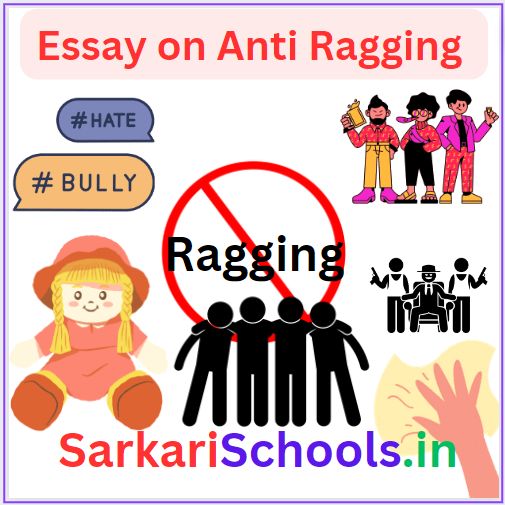Explore the comprehensive Essay on Rescue and Relief of Any Disaster. Discover the strategies, challenges, and crucial components involved in mitigating the impact of disasters. Gain insights into search and rescue operations, medical assistance, shelter provision, and international cooperation. This essay delves into the intricacies of disaster response, emphasizing preparedness, communication, and the psychological support needed during and after crises. Uncover the role of logistics, resource management, and the long-term recovery phase, offering a holistic perspective on humanity’s resilience in the wake of adversity. Read more to understand how communities navigate the complexities of rescue and relief efforts, working towards rebuilding and recovery.
Essay on Rescue and Relief of Any Disaster

Rescue and Relief Operations in the Face of Disaster
Introduction:
Disasters, whether natural or man-made, strike with little warning, leaving devastation in their wake. This essay delves into the critical aspects of rescue and relief operations, examining the strategies and challenges involved in mitigating the impact of disasters.
1. Understanding Disaster Response:
Rescue and relief operations are crucial components of disaster management. The initial response phase involves swift and coordinated efforts to save lives, provide immediate aid, and assess the extent of the damage.
2. Preparedness and Early Warning Systems:
Effective disaster management begins with preparedness. Early warning systems, coupled with community education, play a pivotal role in minimizing casualties and facilitating a timely response.
3. Search and Rescue Operations:
One of the primary goals in the aftermath of a disaster is to locate and rescue survivors. Trained teams equipped with specialized tools and technology work tirelessly to extricate individuals trapped in collapsed structures or hazardous environments.
4. Medical Assistance and First Aid:
Injuries are common in the aftermath of disasters. Medical teams provide on-site assistance, treating the injured and arranging for the transportation of critically wounded individuals to medical facilities.
5. Shelter and Evacuation:
Providing temporary shelter is a critical aspect of disaster relief. Evacuation plans are executed to move people away from danger zones, ensuring their safety and well-being.
6. Logistics and Resource Management:
Coordinating the flow of resources, including food, water, and medical supplies, is essential. Efficient logistics ensure that aid reaches affected areas promptly, addressing the immediate needs of survivors.
7. Communication and Information Dissemination:
Clear communication is vital during rescue and relief operations. Timely and accurate information helps coordinate efforts, prevent chaos, and keep affected populations informed about the ongoing response.
8. Psychological Support and Counseling:
Disasters take a toll not only on physical health but also on mental well-being. Psychosocial support and counseling services are integral to helping survivors cope with trauma and loss.
9. Rebuilding and Recovery:
Once the immediate crisis subsides, the focus shifts to long-term recovery. Rebuilding infrastructure, restoring communities, and providing ongoing support for those affected contribute to the process of recovery.
10. International Cooperation and Humanitarian Aid:
Disasters often transcend borders, necessitating international cooperation. Humanitarian organizations and countries unite to provide assistance, resources, and expertise to support affected regions.
Conclusion:
Rescue and relief operations stand as a testament to human resilience and compassion in the face of adversity. By understanding the complexities of disaster response and implementing strategic measures, communities can strive to mitigate the impact of disasters and pave the way for recovery and rebuilding.

FAQ-Essay on Rescue and Relief of Any Disaster
Q1: What is the primary goal of rescue and relief operations in the face of a disaster?
A1: The primary goal is to save lives, provide immediate aid, and assess the extent of damage in the aftermath of a disaster.
Q2: How does preparedness contribute to effective disaster management?
A2: Preparedness involves early warning systems and community education, which play a crucial role in minimizing casualties and facilitating a timely response.
Q3: What are the key components of search and rescue operations?
A3: Trained teams equipped with specialized tools and technology work to locate and rescue survivors, especially those trapped in collapsed structures or hazardous environments.
Q4: How do medical teams contribute during rescue and relief operations?
A4: Medical teams provide on-site assistance, offering first aid and treating injuries. They also arrange for the transportation of critically wounded individuals to medical facilities.
Q5: Why is the provision of temporary shelter important in disaster relief?
A5: Providing temporary shelter is crucial to ensure the safety and well-being of affected populations. Evacuation plans are executed to move people away from danger zones.
Q6: What role does logistics play in rescue and relief operations?
A6: Logistics involves coordinating the flow of resources such as food, water, and medical supplies. Efficient logistics ensure that aid reaches affected areas promptly, addressing immediate needs.
Q7: How is communication managed during rescue and relief operations?
A7: Clear communication is vital. Timely and accurate information helps coordinate efforts, prevent chaos, and keep affected populations informed about the ongoing response.
Q8: Why is psychological support and counseling essential during and after a disaster?
A8: Disasters impact mental well-being. Psychosocial support and counseling services are integral to helping survivors cope with trauma and loss.
Q9: What is the focus during the recovery phase of rescue and relief operations?
A9: The focus shifts to long-term recovery, involving rebuilding infrastructure, restoring communities, and providing ongoing support for those affected.
Q10: How does international cooperation contribute to disaster response?
A10: Disasters often transcend borders, necessitating international cooperation. Humanitarian organizations and countries unite to provide assistance, resources, and expertise to support affected regions.
Essay on Rescue and Relief of Any Disaster





